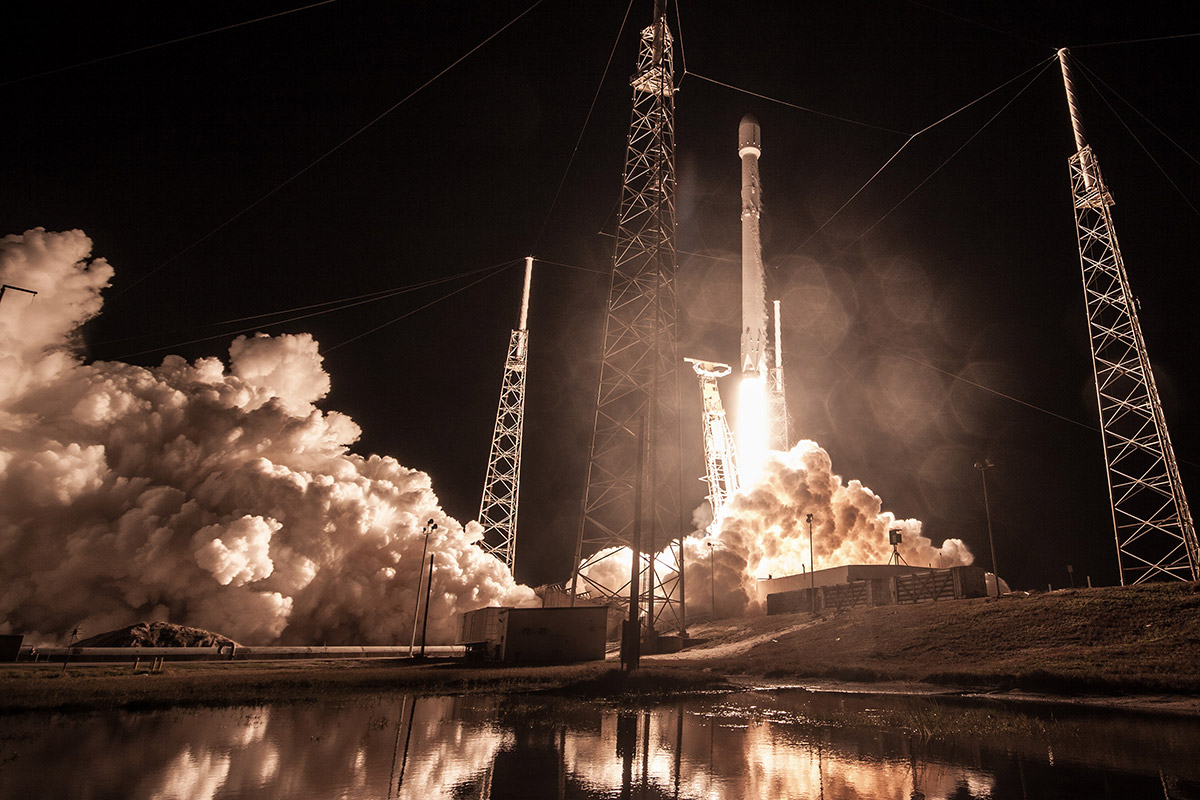What Happened to Zuma? What We Know About the Secret SpaceX Mission

UPDATE: ABC News reported Tuesday evening (Jan. 9) that Zuma plummeted into the Indian Ocean. The ABC News report cites a single, unnamed "U.S. official."
Something weird is going on with a classified SpaceX payload launched Sunday night (Jan. 7), codenamed Zuma. Either the mission failed, and a U.S. spy satellite was lost in space, per Bloomberg and Wall Street Journal reports that were posted Monday (Jan. 9), or it succeeded, per SpaceX.
Loren Grush, a reporter at The Verge and SpaceX expert, does a good job of untangling the threads in an article posted early today (Jan. 9).
First, here's what's known:
SpaceX, as usual, livestreamed the launch, and everything appeared to go as planned. Then, as usual with classified payloads, the livestream cut off before the separation of the nose cone and deployment of the satellite it holds. However, unusually, neither SpaceX nor Northrop Grumman (the company that built Zuma) initially confirmed a successful launch. The next datapoint came from U.S. Strategic Command, part of the Department of Defense that tracks all such orbiters. Strategic Command added a new satellite to its Space-Track.org catalog after the launch, designated USA 280, but — as usual for classified objects — did not provide an orbital path.
"That likely means someone within Strategic Command added Zuma to the catalogue after the satellite completed an orbit," Grush wrote.
Get the Space.com Newsletter
Breaking space news, the latest updates on rocket launches, skywatching events and more!
The Wall Street Journal and Bloomberg then reported, drawing on government sources, that Zuma did not separate from the rocket. Bloomberg reports that the upper stage failed, and the Journal reports that the spacecraft fell back to Earth. The upper or second stage of the rocket is the section just below the payload. Once the first stage helps boost the entire craft to a certain altitude, it gets released and the upper stage ignites to ultimately bring the payload to its final orbit. "Following first stage separation, the second stage Merlin ignites and takes the payload to a parking orbit before igniting again to place the payload into its final orbit. Once the second stage orbit ignites, the payload fairing is jettisoned," Spaceflight Insider reports.
However, SpaceX is sending signals that — at least on that company's end — everything worked properly. In a pair of statements to Grush, the company said "reviews of the data indicate Falcon 9 performed nominally" and later, from President/COO Gwynne Shotwell, "For clarity: after review of all data to date, Falcon 9 did everything correctly on Sunday night."
What does all of this mean?
It's unclear. But Grush writes that SpaceX appears to be trying hard to communicate that it did everything right, without excluding the possibility that there was a failure once things entered Northrop's sphere of responsibility. It's certainly possible that SpaceX's Falcon 9 successfully lofted Zuma to orbit, but that Zuma failed to deploy or operate properly after deployment.
It might become clearer in the coming weeks whether a new satellite now orbits the Earth, alive or dead, as amateur astronomers try to spot the object. Already, one such early datapoint has come in: Peter Horstink, the Dutch pilot of a Boeing 747-400 freighter flying at 35,000 feet (about 10,700 meters) just north of Khartoum, Sudan, photographed a green-blue "spiral" that, according to SatTrackCam Leiden's blog, was likely the result of the Falcon 9 upper stage depressurizing and venting fuel.
Read Grush's full report at The Verge.
Editor's note: This story, originally published at 1:04 pm Jan. 9 was updated at 11:25 am Jan. 10 to include reporting from ABC News.
Originally published on Live Science.
Join our Space Forums to keep talking space on the latest missions, night sky and more! And if you have a news tip, correction or comment, let us know at: community@space.com.

Rafi wrote for Live Science from 2017 until 2021, when he became a technical writer for IBM Quantum. He has a bachelor's degree in journalism from Northwestern University’s Medill School of journalism. You can find his past science reporting at Inverse, Business Insider and Popular Science, and his past photojournalism on the Flash90 wire service and in the pages of The Courier Post of southern New Jersey.










